Feminism and the Disney Princesses
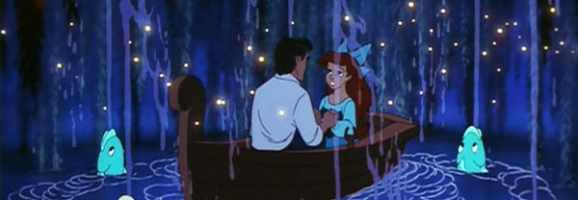
The History of The Disney Princess
One of the most iconic concepts from the Disney corporation is the “Disney princess.” From a marketing standpoint, in can be argued the primary demographic focus of the company has been aimed a young girls since its inception. There have been exceptions to this of course, especially in recent decades. Still, many of the films associated with the company have young female leads. Since many films were based on classical fairy tales or myths, these women were traditionally the generally accepted view of a princess. They were usually women who found themselves in trouble and were rescued by a man at some point. Essentially, they were beautiful damsels in distress and not much else.
Recent discussions have brought up the notion that these characters and their respective films may have a negative impact on the young viewers, male and female. Should women like Snow White or Sleeping Beauty be role models for future generations? Some have claimed films such as Cinderella or The Little Mermaid are anti-feminist in some regard. Here, we shall be exploring some examples of how this may be, but also some counterpoints in how Disney has improved on this over the years.
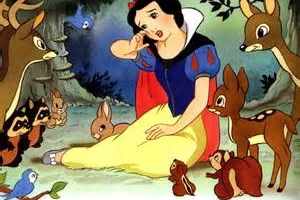
The Blandness of Snow White
Generally, the most anti-feminist views could be more prevalent in the decades preceding the Disney Renaissance of the 1990s. Many of the female protagonists were bland and only defined by exterior beauty. Snow White for instance, was stated as being “fairest of them all.” Here, physical beauty was the primary fuel for the queen to attempt an assassination. When the huntsman spares her or when the dwarves take her into their home, it could be perceived this was at least initially due to her beauty. Now, Snow White was a compassionate individual who managed to contribute to the household and improve the lives of her new family members. Sadly, this is the only positive attribute she had besides her beauty. Her most defining characteristics are primarily superficial. Even her purpose within the household was primarily to do housework.
At the time the original film was created, women were still little more than second class citizens. In a historical context, they had only achieved the right to vote two decades earlier. Beyond the success of the suffragist movement, not much had been done to allow women equal status as men in the work force. The main expectation was for a women to remain within her home, clean and raise children. It was still very difficult for a woman to attempt self actualization, even if education was encouraged. Snow White is a clear example of what was expected of young women at this time. Be pretty and be nice. That was it.
Interestingly, some of the most classic villains are women. Most would argue they are generally more iconic than most of their male counter parts. This is a perhaps less so in earlier films. The evil queen in Snow White is possibly even more bland than her step daughter. While it is true that she does have presence and power to offer a counter point to the young heroine, she is so one dimensional that she’s practically anti-feminist herself. This is mainly due to her motivation. What is it after all? She is jealous of a younger and prettier woman who simply receives more attention. For a supposedly clever woman with wealth and power and beauty of her own, the fact that her motivation is so petty creates a very negative and simplistic view of what motivates women. Now while it could be argued that she is also a product of the times, a societal view which does carry on to this day, she still represents an ultimately weak and simplistic view of a female.
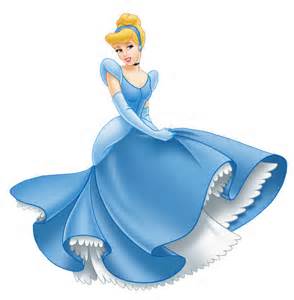
The Pattern Continues
In the following decades, similar examples of simplistic portrayals of women in Disney would continue to be shown. Let us next consider the primary message of the film Cinderella. Cinderella herself is very similar to Snow White, with just a touch more personality. Though it was primarily due to the circumstances of a domineering parental figure, Cinderella spends most her life in servitude. She is confined to the house and does menial chores. Now what is the solution the film offers for her to break free from these shackles? A fairy godmother arrives to allow her the means to go to a party, wear an expensive dress and meet the man of her dreams. In this tale, how does she attract a potential husband? Much like Snow White, simply being pretty. This creates the message that what a young women should strive to do is look good enough to attract a mate. Conversely, any boys watching may assume that’s what women are ultimately like and psychical beauty is of the most value.
Sleeping Beauty follows the same basic pattern as the two previously mentioned films. Aurora herself is possibly the blandest Disney princess of them all. She is easily ensnared by the villain of the film and demonstrates no real personality beyond a pretty face and a serviceable singing voice. Much like Snow White, this film has an iconic villain. Malificent is one of Disney’s most intimidating forces. However, we must observe the motivation for an antagonist. What is it? She wasn’t invited a party. That’s it. One of the most evil villains in the history of the company simply wasn’t invited to the coronation. This isn’t necessarily bad in and of itself. However, it does suggest a certain fickleness that is perhaps unbecoming of such a villain. This could be waved away as an example of how petty she is, but it does create another very simplistic view of female behavior and motivations.
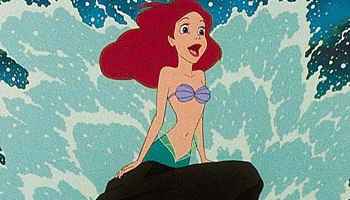
A New Era Begins
In recent decades, Disney has shifted their attention to created more well rounded stories and complex characters. At the forefront of this has been the portrayal of female leads. While some cases have been made that these young women suffer from Disney’s tendency to simplify these characters, obvious improvements have been made. This became more noticeable in the late 1980’s, during the beginning of the company’s return as a leader of family entertainment and animation in general.
The film that lead this movement, The Little Mermaid, has come under the most controversy of the more recent Disney films. This is mainly due to the actions and motivations of the main character, Ariel. The young mermaid has a fascination with the human world. She even lays her eyes upon a man for the first time and instantly falls in love with him. While this could be explained as adolescent infatuation, it is presented as “love.” This could easily be misinterpreted by young viewers. Even worse, Ariel is tricked into giving up her voice in order to be allowed the roam the land and gain the attention of this young man. Feminists have criticized this plot point for a fairly obvious reason. By sacrificing her voice, Ariel is essentially giving up her identity. She’s giving up her ability to express herself as an individual on equal footing. True love is implied here as being little more than silence and servitude to her male counter part. While Ariel is better written than most Disney princesses that preceded her, she still suffers from a very similar behavior.
The biggest counterpoint to this is the fact that Ariel is portrayed as a more realistic adolescent girl. She is inquisitive and impulsive, but at the very least show’s some initiative beyond staying stuck in a castle. She has dreams of exploring and transcending her current lifestyle. That’s much more than previous princesses demonstrated. Some could also make the claim that the film could be suggesting the romantic connections involve more communication that the vocal. This is a nice notion, but since Ariel doesn’t really do much beyond smile pleasantly, this isn’t really the strongest argument. While Ariel was more well rounded that those that came before, the plot of the film still leans towards suggesting superficial attributes towards feminine behavior and general motivations.
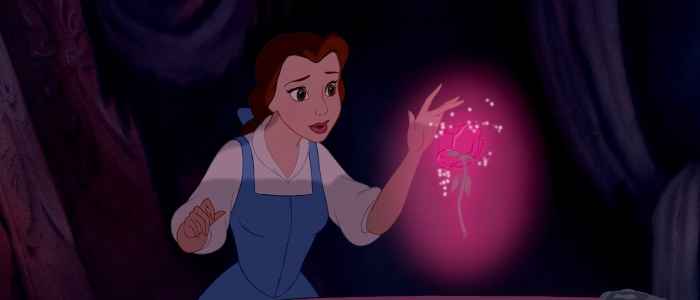
Belle Sets New Standards
The next few films would feature female leads who were more independent, free thinking and presented on equal footing with their male counterparts. The first of these was Belle of Beauty and the Beast. Belle is shown right away as being intelligent and educated and not particularly interested in men. While other women are swooning over the bachelor Gaston, Belle doesn’t give sway to his aggressive attentions. Belle only becomes a “princess” by circumstance. Interestingly, though she is portrayed as a beautiful young woman, the primary theme of the film suggests the importance of inner beauty. After all, the fact that Belle may be physically attractive is not a crucial factor to the plot. She is shown as being compassionate and patient. This is why the relationship between Belle and the Beast is one of the best developed in the Disney canon. They actually have time to overcome differences, learn from one another and eventually love each other. Previous to this, most princesses simply looked beautiful and that was enough to entice young men to be interested. With Belle we actually have a realistic and well written role model for young men and women.
Even in films with males as leads, women were beginning to show more independence and genuine personality. Two of the best examples are within Aladdin and The Hunchback of Notre Dame. Aladdin had Jasmine, a princess who defied expectations up to that point. She refused to be a political pawn for her father or Jafar. She wasn’t concerned with romantic connection initially. Rather, she wanted to pursue some form of self-actualization. This is an excellent role model for women. Jasmine stresses the importance of independence and self-reliance over hormone influenced pursuits that often distract adolescents. Jasmine’s mentality would greatly influence the trend of how feminine goals would be portrayed later.
Esmerelda of The Hunchback of Notre Dame presented a different form of complexity. Being both a woman and minority in foreign nation, she must constantly resist the forces that are constantly trying to oppress her. She shows great skills in dealing with Frollo and his minions and was willing to speak her voice when Quasimodo is being tortured in front of a crowd. While she is somewhat reduced to a damsel in distress by the end the film, she is presented as being fleshed out individual who builds a mutual friendship with the male lead rather than a romantic one.
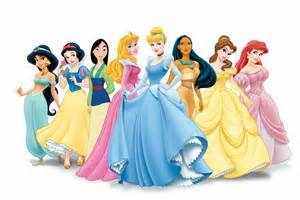
Mulan and the Future
The most dramatic shift perhaps came with 1998’s Mulan. Mulan is struggling with the image that her family and society have imprinted on her. She must be presentable as a bride to uphold her family honor. However, when her aging father is called upon to military service when the huns invade, Mulan takes it upon herself to impersonate a man and take her father’s place. This is a complete challenge to gender roles which is fairly progressive for Disney. There is a romantic connection in the film, but it’s not the main focus for once. Here, Mulan is trying to make something of herself without obtaining male compaionship. Mulan doesn’t align with traditional views of feminine behavior. Rather, she challenges these views. Mulan cares more about upholding her duty and saving her father than romantic connections. This doesn’t imply that she doesn’t care about such things but rather that she has higher priorities. She is shown of being capable of taking care of herself moreso than any other “Disney princess” in the traditional sense. Mulan is therefore the greatest leap forward for strong female characters in Disney.
The company has continued with female characters who are typically better written as role models and as characters in general. The most recent examples can be seen in The Princess and the Frog as well as the major hit, Frozen. Both films show women who go against the typical views of the Disney princess in a number of ways. Disney has truly had some issues with creating well rounded female characters in its history. However, over the decades the company has shown a great deal of improvement. It could be stated that they have provided their audiences with some of the best female characters in animation and perhaps all of film history. There are still some improvements to be made for consistency, but Disney has proven several times that they are hardly anti-feminist in their agenda.
What do you think? Leave a comment.
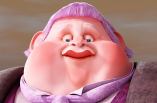

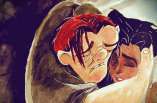








While I will agree that Cinderella is only loved by the prince for her looks, I think she gets a bad rap from Disney fans. The way I see it, she works hard almost all of her life, and she is rewarded for in the end. That is actually a pretty good message for kids to live by. The message was done even better in the Princess and the Frog.
Aaron you have an interesting point on the Disney version of Cinderella and the Prince regarding their relationship. I appreciate the Ever After version where a relationship was built between the Prince and Cinderella. Although, both of the films do show hard work is rewarded like you said.
The hardcore feminists that complain about every single thing, are the ones that make actual feminists, that care about actual problems, look stupid.
Disney Princesses are basically alpha females almost at the beginning of their reproductive years. This is why they are what hetero men find alluring and what hetero females wish to be like. It’s basically the female biological counterpart to the alpha male jock — they get their status largely from their physicality.
What I’ve found more prevalent in recent years is a practice of females in the same approximate age range as Disney princesses using their physically derived status to emotionally bully lower status males, often in the name of some political or activist agenda.
I know she’s not a princess, and the film never comes up in the Disney Princess discussion, but I’d like to give a shout-out to “Lilo and Stitch”. Lilo herself is a great character, and her big sister is a single mom (well, mom-standin) Making It Work. If my granddaughters get more inspiration from L&S than from most of the Princess pantheon, I’ll be happy indeed.
(Currently they’re obsessed with Frozen, and I’m OK with that… but I like Lilo and Stitch better.)
Thanks for this thoughtful analysis of disney princesses.
My daughter loves Mulan probably more than most Disney movies…and I’m guessing Mulan being the character she is certainly is part of it. Disney’s track record is uneven, to be sure, but since ‘The Little Mermaid’ there has been a clear attempt to play against the classic ‘princess’ tropes. Frozen and Brave, in particular, are direct reactions and counter-arguments to them: Brave has no romantic lead, while Frozen plays directly against it.
Mulan was groundbreaking in its feminism aspect but I do think Belle is seen wrong. She isn’t against feminism, in fact she is a clear attempt to bridge the gap. Given Disney’s tendencies to remain traditional most of the time, this is not a bad thing, especially since Belle doesn’t really do anything to suggest she needs saving or that in any way weaken her character. In fact, her initial attempt to leave the castle suggests she is the type to say enough is enough if she has to.
Great article.
I wonder if this is something that is Disney-centric seeing as many of these characters come from literary sources. You do a great job of showing that when characters are adapted they can also be manipulated to only be a shell of their former incarnations. Well done!
Insightful article. It is always so fascinating how movies display historical culture, particularly the sexism and racism of the time.
I wonder if you’ve ever read anything on Disney’s transphobia- not just a reflection on Disney but on our culture. Have you noticed that all the villains in Disney movies have attributes of the opposite sex? Maleficent has her hair slicked back like horns instead of Aurora’s long flowing hair, Jafar has a feminine face and physique with long eye lashes, Ursula is very masculine, built stocky with a short hair cut…the list goes on. Most villains, particularly in the past, have the stereotypical attributes of the opposite sex – a culture’s natural and unfair gut reaction to people who cross-dress, are gender fluid, or transgender?
A lot of the earlier one-dimensional portrayals of women reflect Walt’s own ideologies. I’m glad that you brought up historical context in the article, because Walt was a product of his times and, in many ways, he was ultra-conservative as a boss. He had defined roles for women and men, and these boundaries were rarely blurred. While Walt had many fabulous qualities that should not be ignored, his particular outlook on women really led to Disney’s stagnation in the late 20th-century.
In the post-Walt era, it has been refreshing to see Disney evolve with the next iterations of film making and cultural perspectives. They have not always succeeded, but their more recent work is wonderful to see.
This was a rather well written article. The only thing I think was left out were the other “nice” fairies in Sleeping Beauty, but they aren’t generally shown to be the “Princesses” of the movie.
The Tangled songs are actually quite catchy. My kids went through a Tangled phase earlier this year (after they got bored of Frozen), and my wife and I routinely caught each other humming the songs to ourselves for weeks after they gave it up. They’re not as catchy as the songs from Frozen, as I haven’t watched that in months and could still sing Let it Go or The First Time In Forever from memory, but I also didn’t have the Tangled soundtrack playing in my car for months either.
Call me bitter, but I wouldn’t say movies about pretty ladies singing their way to (inevitable) true love are particularly progressive. I guess traditional gender roles are a hard habit to kick.
I propose the next Disney princess be maybe a little chubby. And Latina!
Maybe there’s some good Carribean or South-of-the-US American fairy tales that would be good for the pop culture blitzkrieg treatment.
I enjoy your analytical technique.
It is obviously fiction, it is a form of imagination, when you are young you don’t have a job. I don’t recall being 5 years old thinking what does Belle do for work or why do those single woman dislike her? These are things you notice when you are older, that is what makes being young so beautiful. Ignorance is bliss, of course to a certain extent, but in this case allow little girls to continue having dreams of being a princess.
I think that you have a veryyyyyy limited understanding of the ways in which environment influences children subconsciously and shapes the way they behave for their entire lives. of course 5 year olds aren’t literally thinking about how these movies fit into feminist theory or whatever. but the point is that if all your heroes during your most impressionable stages of life are mainly concerned with romance above all and exhibit no agency over their own lives, you might just maybe have trouble totally pushing that out of your subconscious when you start making your OWN way in life.
I liked Charlotte’s character in the Princess and the Frog, I enjoyed their friendship. In the end she was good-natured and tried to help her friend. There are many types of people and just because someone may seem superficial doesn’t mean they are not a great person.
Nice take on Disney princess feminism. We have to remember though, a woman who doesn’t want to get married isn’t necessarily a feminist. In the same way, being a married woman doesn’t make me anti-feminism.
The other thing that happens in Little mermaid is that whereas Belle sacrifices herself to save her father, Tritan sacrifices himself to save Ariel — a more modern notion of fatherhood.
I think your article is good, in that it gives younger readers a general introduction to the theme common in earlier Disney films, which not only conveyed conventional modes of femininity in its female lead characters but was also sexist in the process. There are a few minor grammatical errors. You do not provide a counter-argument, by suggesting in your conclusion that although Mulan and Princess of the Frog are improvements in lead female characters by Disney, that newer versions of Cinderella, such as the one by Kenneth Branaugh (2015) seem to be reverting back to old sexist standards.
I personally think Mulan is bad ass and it takes female issues head on, specifically in the scene where she asks for help and Mushu says “Sorry, I can’t hear you. You’re just a woman again.” and when Mulan says, “You said you trusted Ping, what makes Mulan any different?” I really loved this movie since I was a child, and it tells girls to take pride in being different. I though this was a better movie than The Princess and the Frog (who still found her fulfillment in love and marriage). Mulan became a hero. Captain Shang was just the cherry on top. LOL
Mulan is my favorite as well!
I like how the chronological order of the Disney Princess’ reflect the evolution of feminism. It shows how popular culture is a product of the time.
There are a few grammatical errors, but the quality of the article is good and thought provoking. Feminism is a tricky subject to tackle, so kudos to you!
This was a nice, thorough article. I would have given an honorable mention to Merida as well (though she is a Disney-Pixar princess) for breaking gender norms even further.
Enjoyable read!
Interesting article! The Beauty and the Beast story has always been very problematic for me. It’s supporters are right in making the points that you make in this article: Belle is a wonderful character, and the idea that we should love people for who they are in the inside and work past surface flaws is indeed a powerful one. But too often the framework of this story gets twisted into the idea that if a woman loves a man enough, she can change him from a monster into a loving husband. The positive and negative implications are very difficult to untwine, and so Beauty and Beast stories of any adaptation always make me nervous, to some extent or another. However, you do an excellent job of arguing Belle’s status as the turning point for feminism in Disney work. Well done!
Disney’s track record is uneven, to be sure, but since ‘The Little Mermaid’ there has been a clear attempt to play against the classic ‘princess’ tropes. Frozen and Brave, in particular, are direct reactions and counter-arguments to them: Brave has no romantic lead, while Frozen plays directly against it.
Sleeping Beauty has always been my least favorite story. She’s practically irrelevant to the plot, spending half of it unconscious; as they say, you could replace her with a sexy lamp and tell the same story.
Feminist or no, Disney is still the Antichrist.
I like your comment.
Elsa is the most passive and undeveloped princess of them all.
I feel like Brave does not get as much credit as it deserves! It is a wonderful movie with three-dimensional characters and an incredibly positive message! Merida is such a BOSS!
Being rich, charming and good looking doesn’t the prince have to do something dangerously heroic like slay a dragon or thwart the evil ambitions of his nemesis? This is the fairy tale metaphor or are we still talking about Disney.
I understand the need for more independent women characters but, the truth behind it all is that a young girl’s actual life experiences and interactions with people will most likely shape her views on womanhood. I say let the kids be kids and be free spirited while they can be. Disney Princesses are for entertainment, not to send some secret message that they have to choose what kind of woman to be. It’s so sad that we have to think this way.
I completely agree. I was obsessed with Disney when I was young, and I can confidently say it has not affected my life negatively today. I have a great job and am a very independent individual. My parents had to do with that, not the movies I watched.
I am very interested in this piece, and found it extremely resourceful for the dissertation I am writing about Feminism within Disney.
Very good analysis of feminism related to the princess stories so popular among young girls today.
I love the thorough analysis of feminism, I would however, that disney feminism is very one-sided, and until the production of the “princess and the frog”, there was a sore lack of a strong minority voice.
The way in which you laid out your article is effective in detailing each of your points on the history of feminism in Disney’s films through the years. On the subject of Ariel though, the fact that she happened to sacrifice her voice for a man doesn’t necessarily mean that he was her only motivator to be a human being. Ariel’s main song “Part of Your World” illustrates that the thought of being human had always been on her mind long before she even met Eric so for that reason, Ariel in particular doesn’t seem quite as backwards in her story’s feminism; especially since it was her own free will that dictated her actions throughout even if they were unwise. But in any case, with Disney and feminism, I agree that it is ultimately more of a mixed bag when both factors are analyzed side by side as you demonstrate here.
I always thought about Snow White as Eve, and find it interesting you put her here as the first woman as well. As the eater of the poisoned apple and forbidden fruit, with her purity becoming suddenly impure, I love how she is being compared to the bland because she is the typical virgin, an undevelopped, flat character.
But they are both ones I love! This piece was exceptional overall, and a great read. I would love if you came out with more interesting literary articles, particularly anything Disney!
Mulan definitely had the greatest impact on me when I first watched it because she was the first Disney female protagonist who had a true character arc and was heavily involved in the plot the whole way through. It continues to amuse me that she is grouped in with the other princesses but I am very glad that Disney continues give young girls role models who are in control of their own destiny.
Excellent article. Interestingly, for me at least, is that in the past when Disney portrayed European women, they were assigned into the traditional 1950s gender role. When Disney portrays Belle (French), Jasmine (Middle Eastern) and Esmerelda (Roma) the ethnic roles appear more well-rounded. Even Nala (African) in Lion King is a co-conspirator with Simba. Like all things Disney though characters are market driven. The more money Disney can make with stronger female characters the more they will provide the audience with these type of characters.
The complexity of the characters of both genders has undergone some changes as well. I would be interested in reading an article by you and learning about your analysis of Disney’s male characters.
Excellent article. Interestingly, for me at least, is that in the past when Disney portrayed European women, they were assigned into the traditional 1950s gender role. When Disney portrays Belle (French), Jasmine (Middle Eastern) and Esmerelda (Roma) the ethnic roles appear more well-rounded. Even Nala (African) in Lion King is a co-conspirator with Simba. Like all things Disney though characters are market driven. The more money Disney can make with stronger female characters the more they will provide the audience with these type of characters.
The complexity of the characters of both genders has undergone some changes as well. I would be interested in reading an article by you and learning about your analysis of Disney’s male characters.
I always thought that Disney provided girls with two types: the beautiful damsel in distress (Elsa) and the independent and admirable girl (Anna).
I suspect part of Frozen’s success has to do with the fact that you have your typical princess and the modern one.
My favorite princess is Belle.
So this dead horse is still kicking, huh?
A lot of the time, the Disney Princesses were modeled after what the expectation for women during the time-period they were created in. That said, as popular as they still are today, we probably shouldn’t be using some of the first princesses as highly regarded role-models anymore…
Honestly, I almost stopped reading your article before I began. In the very first paragraph, you wrote “in can be argued the primary demographic focus of the company has been aimed a young girls.” In this sentence alone you have two glaring mistakes; it should read : it “can be argued the primary demographic focus of the company has been aimed” in can be argued the primary demographic focus of the company has been aimed (at) young girls.” These mistakes made me question how thoughtful or how much effort could the writer give to this article if the first paragraph isn’t clean and well written. Your article does present some good points but much like your opening paragraph your research and evidence falls flat. I believe you have good bones for the beginning of a great article, but I think you need to do some more research and editing before you can call this article good.
the article has really good examples. showing the improvement of Disney from anti-feminist heroine to feminist heroines. I really enjoy it. it is in the way that I’ve thought about characteristic of heroines in Disney characters. animations have important role in training and shaping images of ideal roles for children. the strong women characters should depict more for having strong and intelligent women in future.
It’s crazy to think how Disney has become a front runner in producing non-stereotypical characters that can have plots that don’t entirely revolve around males. For example, frozen shows Elsa who has emotional issues and no male counterpart. Disney is not out of the woods entirely as its characters tend to physically look similar and there needs to be more variation body shape wise.
Very insightful article concerning the princesses’ agency. It can definitely be a complex issue when we look at how femininity is portrayed. I’m interested in the future of Disney princesses and representation.
Loved the way this is structured, giving examples of princesses whilst progressing through Disney’s advancements to make the stories of these princesses more appropriate to the modern age.
I believe the original Snow White won an Academy Award for being the first full-length cartoon film. It was considered innovative for the time.